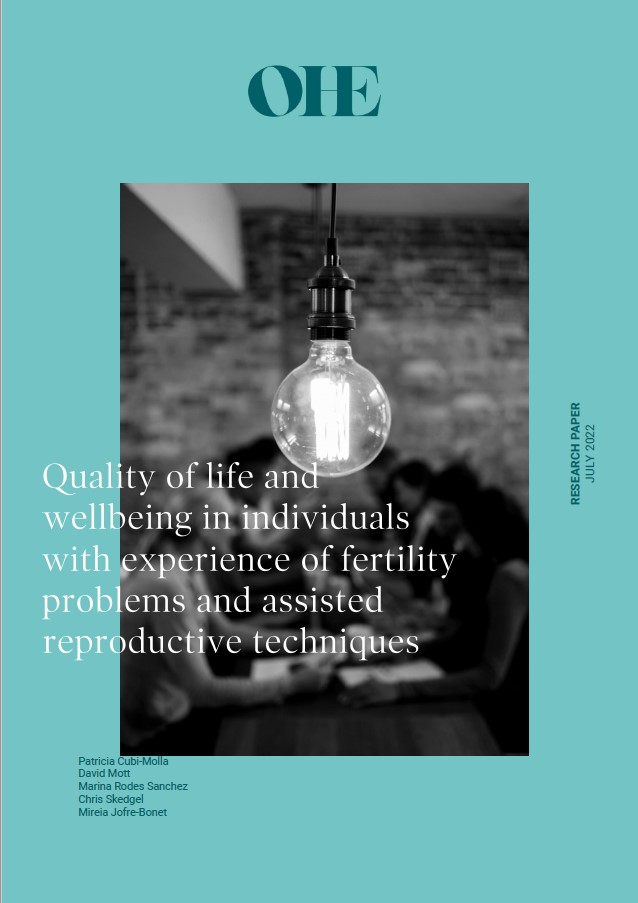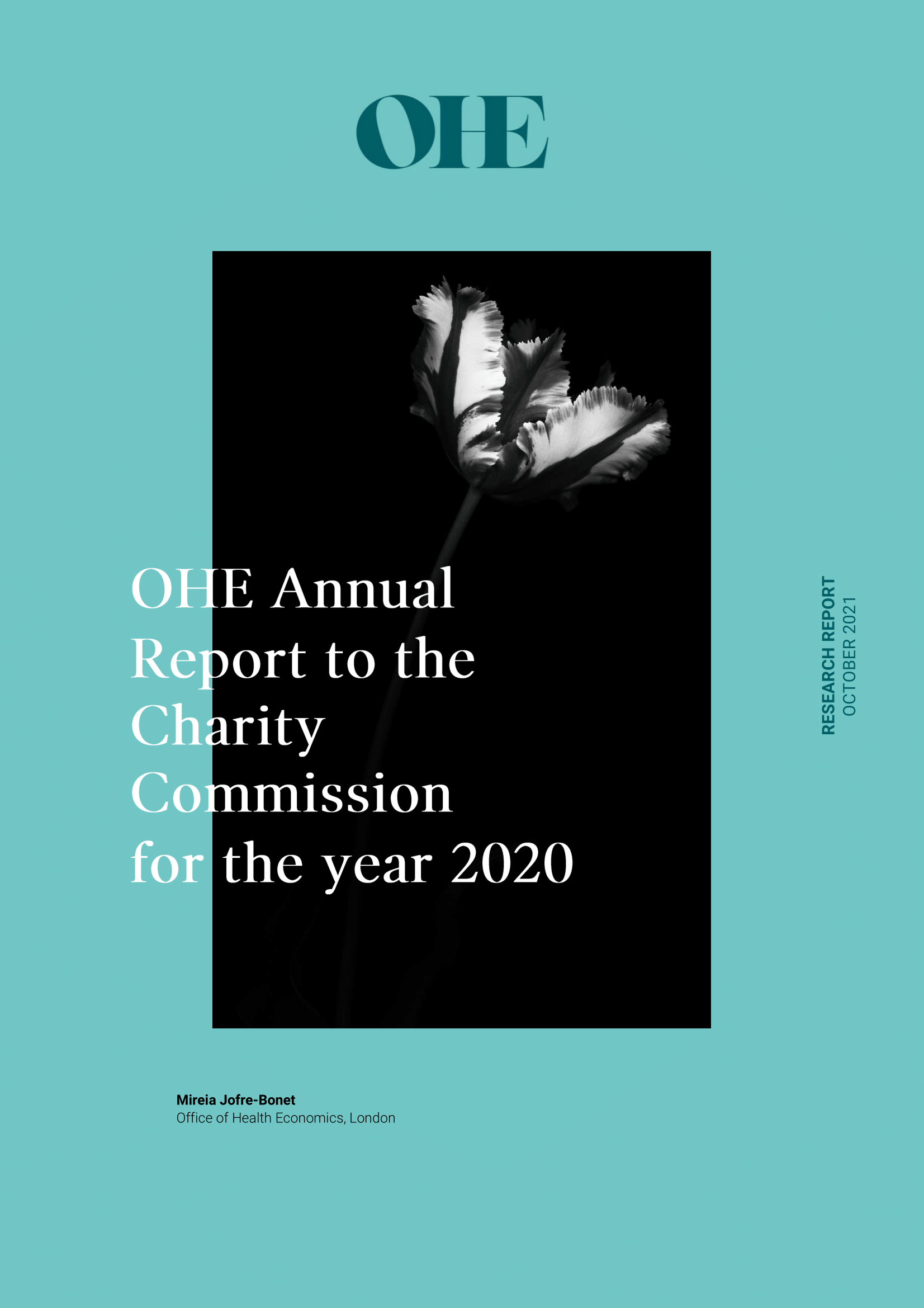In a recently published OHE Consulting Report, we report the long-term return on investment (ROI) per £1 spent on various vaccination programmes from the perspective of the UK government. In this blog, we discuss how discounting affects the estimated long-term value of vaccination and, thus, decision-makers’ investment decisions.
In a recently published OHE Consulting Report, we report the long-term return on investment (ROI) per £1 spent on various vaccination programmes from the perspective of the UK government (Brassel and Steuten, 2020). The results show that vaccine programmes generally provide positive financial returns, yet the magnitude of these is highly sensitive to the choice of discount rate.
In this blog we discuss how discounting – a technical correction applied in economic evaluations to reflect the fact that costs and benefits are considered less important the further they arise in the future – affects the estimated long-term value of vaccination and, thus, decision-makers’ investment decisions.
The ROI of vaccination from a government perspective
Vaccination programmes can have a substantial macroeconomic impact. Therefore, we estimated the financial ROI of various programmes from a UK government perspective. The analysis included the loss in direct and indirect tax contributions due to morbidity and mortality of vaccine-preventable diseases, the associated pay-outs for sick days and the loss in informal care, in addition to the medical costs falling on the NHS.
Using a model-based approach, using published literature to inform model input parameters, we estimated the lifetime costs and monetary benefits of programmes introduced relatively recently in the UK’s national immunisation schedule, including:
- The human papillomavirus (HPV) vaccination program, which that has been routinely offered since 2008 to girls aged 12-13 years to help protect them against cancers caused by HPV;
- The pneumococcal disease (PD) vaccination program, implemented in 2010, offered to infants in their first year of life to protect them against 13 types of pneumococcal bacteria.
The analysis showed that the HPV-programme and the PD-programme, both delivered to a younger age cohort and preventing fatal events or costly long-term sequelae in the working population, are estimated to have a positive, discounted, ROI of £1.50 and £4.45 respectively.
Of all input parameters included in the model, the cost discount rate was among the most influential parameters determining the estimated financial ROI[1]. To illustrate, the estimated ROI of the HPV programme increased from £1.50 when using the base case discount rate of 3.5%, to £2.84 when using a discount rate of 1.5%[2], and £5.11 if no discounting is applied. The effect on ROI of the PD programme is even stronger. There, the ROI estimate increased from £4.45 (discounted at 3.5%) to £14.33 when discounted at 1.5%, and if results are not discounted at all, to £39.65.
Discounting can have a strong effect on the health economic value of vaccination programmes
Beyond financial analyses, discounting of both costs and effects can have a particularly large impact on the cost-effectiveness of vaccine programmes (Jit and Mibei, 2015). As described by the World Health Organisation (2019), this is because (i) there are often long delays between the vaccination event, the time that an infection is averted by vaccination, and the time when disease is averted by vaccination; (ii) vaccination often protects against childhood diseases which can cause death or long-term disability, implying many future life-years are affected by vaccination; (iii) the population-level externalities of vaccination (such as herd protection and pathogen strain replacement) can persist for a long time, and sometimes even beyond the lifetime of the vaccine; and (iv) vaccination allows the possibility of eradicating a disease, which in principle produces a stream of benefits indefinitely.
The international perspective
Internationally, policymakers and academics have long debated discounting in the economic evaluation of healthcare interventions in general (Brouwer et al., 2005; Claxton et al., 2011)and vaccines specifically (Tasset et al., 1999; Jit and Mibei, 2015). Most countries discount costs and benefits at equal rates (equal discounting) without having any meaningful justification for it (Attema, Brouwer and Claxton, 2018). Belgium, the Netherlands and Poland apply differential discounting, where effects are discounted at a lower rate than costs, in response to philosophical and ethical objections to equal discounting based on the grounds of intergenerational equity[3] (Lipscomb, 1989; Tinghög, 2012).
The differences are reflected in a consensus statement from the European Vaccine Economics Community (Ultsch et al., 2016)that, in fact, did not reach a consensus on the specific issue of discounting. However, most experts agreed that differential discounting should be applied if the modelled time is long, and that the discount rate for effects being roughly half of the discount rates of costs. Furthermore, for long time horizons, constant discounting is considered unsuitable and a declining discount rate is preferred (Ultsch et al., 2016).
Why the UK needs to get it right
Within the UK, a particular concern is that the discounting rates applied differ between institutions. For interventions like medicines and diagnostics, the reference case for Technology Appraisal by NICE currently recommends equal discounting for costs and benefits at 3.5% per annum. The Joint Committee on Vaccination and Immunisation (JCVI), which advises the government on its vaccination schedule, currently follows this reference case and hence vaccination programmes are also discounted at 3.5%. The NICE methods for the development of public health guidance, however, applicable to interventions such as smoking cessation, requires discounting at an equal rate of 1.5% in the base case analysis.
Finally, the Government Green Book, issued by the HM Treasury on how to appraise policies, programmes and projects, recommends that all costs and monetary benefits should be discounted at 3.5% for the first 30 years, and at 3% for years thereafter. Health effects should be discounted at 1.5% for the first 30 years, followed by 1.286% in the years afterwards.
The situation described above risks discrepant decision making due to different valuations of future costs and benefits, not only across UK government departments but also within its Department of Health and Social Care. Lowering the discount rates to 1.5% in the NICE Technology Appraisal reference case would help to overcome this discrepancy. Others have also argued that a discount rate of 3.5% may be too high for technology appraisals (Attema, Brouwer and Claxton, 2018; Claxton et al., 2011)and its level is currently under review as part of the NICE methods review. In fact, one of the reasons the discount rate for vaccines had not been changed during the last consulation on Cost-Effectiveness Methodology for Immunisation Programmes and Procurement (CEMIPP), was that, at the time, it would be misaligned with the discount rate applied to other interventions undergoing NICE Technology Appraisal.
Resolving the discrepancy is needed, particularly as there is no clear rationale underpinning the various approaches currently taken. While in practice the implications of the choice of discount rate may be less significant for most interventions, where costs and effects accrue in the short term, they can be a critical factor for vaccines due to the intertemporal nature of their impact. As such, this may unduly restrict adoption decisions for vaccines based on cost effectiveness, and potentially jeopardise appropriate investment in vaccines programs compared to other programs or interventions.
With the broad and long-term value of vaccines as prominently discussed as it is today amidst the pandemic, and with the UK leading the way in developing a potential COVID-19 vaccine, it is time to reconsider this critical aspect of vaccines and other health technologies assessment. The UK needs to get it right, consistently.
Related Research
Brassel, S., Neri, M., O’Neill, P. and Steuten, L., 2020. Realising the Value of Vaccines in the UK. OHE Consulting Report, London: Office of Health Economics.
Available at: https://www.ohe.org/publications/realising-broader-value-vaccines-uk
Brassel, S. and Steuten, L., 2020. The Broader Value of Vaccines – The Return on Investment From a Governmental Perspective. OHE Consulting Report, London: Office of Health Economics.
Available at: https://www.ohe.org/publications/broader-value-vaccines-return-investment-governmental-perspective
Further reading
Attema, A.E., Brouwer, W.B.F. and Claxton, K., 2018. Discounting in Economic Evaluations. PharmacoEconomics, 36(7), pp.745–758. 10.1007/s40273-018-0672-z.
Brouwer, W.B.F., Niessen, L.W., Postma, M.J. and Rutten, F.F.H., 2005. Need for differential discounting of costs and health effects in cost effectiveness analyses. BMJ, 331(7514), pp.446–448. 10.1136/bmj.331.7514.446.
Claxton, K., Paulden, M., Gravelle, H., Brouwer, W. and Culyer, A.J., 2011. Discounting and decision making in the economic evaluation of health-care technologies. Health Economics, 20(1), pp.2–15. 10.1002/hec.1612.
Jit, M. and Mibei, W., 2015. Discounting in the evaluation of the cost-effectiveness of a vaccination programme: A critical review. Vaccine, 33(32), pp.3788–3794. 10.1016/j.vaccine.2015.06.084.
Lipscomb, J., 1989. Time Preference for Health in Cost-Effectiveness Analysis. Medical Care, 27(3), pp.S233–S253.
Tasset, A., Nguyen, V.H., Wood, S. and Amazian, K., 1999. Discounting: technical issues in economic evaluations of vaccination. Vaccine, 17, pp.S75–S80. 10.1016/S0264-410X(99)00298-4.
Tinghög, G., 2012. Discounting, Preferences, and Paternalism in Cost-Effectiveness Analysis. Health Care Analysis, 20(3), pp.297–318. 10.1007/s10728-011-0188-6.
Ultsch, B., Damm, O., Beutels, P., Bilcke, J., Brüggenjürgen, B., Gerber-Grote, A., Greiner, W., Hanquet, G., Hutubessy, R., Jit, M., Knol, M., von Kries, R., Kuhlmann, A., Levy-Bruhl, D., Perleth, M., Postma, M., Salo, H., Siebert, U., Wasem, J. and Wichmann, O., 2016. Methods for Health Economic Evaluation of Vaccines and Immunization Decision Frameworks: A Consensus Framework from a European Vaccine Economics Community. Pharmacoeconomics, 34, pp.227–244. 10.1007/s40273-015-0335-2.
WHO, 2019. WHO guide for standardisation of economic evaliations of immunization programs. [online] Available at: https://apps.who.int/iris/bitstream/handle/10665/329389/WHO-IVB-19.10-eng.pdf?ua=1 [Accessed 15 Jan. 2020].
[1] Due to health growing at a slower rate than consumption in most societies, and because uncertainty about catastrophic risk is smaller on the societal level on which vaccination operates.
[2] As this type of financial modelling does not include health benefits, the discount rate for health has no impact on the results.
[3] A cost discount rate of 1.5% is the recommended lower bound for sensitivity analyses as per the reference case for Technology Appraisals by NICE; it is also the discount rate recommended in the NICE methods for public health guidance.





